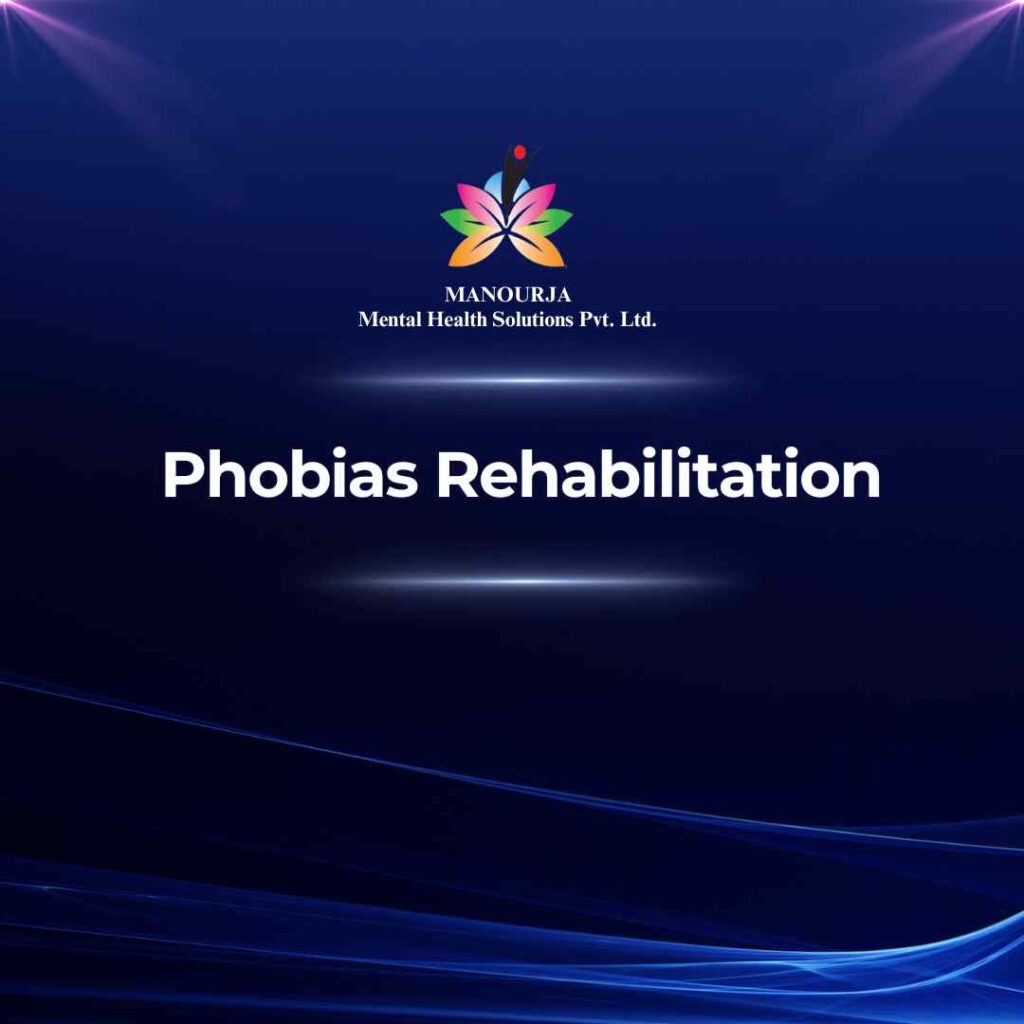Phobias Rehabilitation

Phobias are intense, irrational fears of specific objects, situations, or activities that pose little to no actual danger but provoke anxiety and avoidance behaviors in the sufferer. The severity can vary significantly; in some cases, the phobia can substantially interfere with the individual’s daily life, personal relationships, and well-being.
Signs and Symptoms of Phobias
- Intense Fear or Anxiety: Triggered by a specific object or situation.
- Physical Symptoms: Including sweating, trembling, heart palpitations, or even panic attacks.
- Avoidance Behavior: Deliberately avoiding the feared object or situation.
- Immediate Anxiety Response: The reaction occurs almost instantly upon exposure to the feared subject.
- Recognition of Irrational Fear: Despite understanding that the fear is irrational, the person feels powerless to control the anxiety.
Indicators for Outpatient Psychosocial Rehabilitation (OPD)
- The individual can generally manage daily activities but needs structured support to overcome the phobia.
- The phobia is specific and does not usually trigger a debilitating response unless the feared object or situation is encountered.
- The person has a supportive home environment that can accommodate coping strategies and exercises learned in therapy sessions.
Indicators for Inpatient Psychosocial Rehabilitation (IPD)
- Severe phobias that significantly impair the individual’s ability to function daily.
- Phobias that induce regular panic attacks, leading to profound physical and psychological distress.
- Individuals who have not benefited from outpatient therapy or who live in environments that exacerbate the phobia.
Factors Influencing the Decision
- Severity and impact of the phobia on the individual’s life.
- Effectiveness of past treatments.
- Support system availability and strength.
- Individual’s own preference and commitment to treatment modalities.
How Psychosocial Rehabilitation Aids in Treating Phobias
Psychosocial rehabilitation for phobias focuses on reducing fear and anxiety symptoms, teaching coping mechanisms, and gradually exposing the individual to the fear source in a controlled way, aimed at desensitization.
Specific Techniques and Approaches at MANOURJA
- Cognitive Behavioral Therapy (CBT): Helps individuals identify and challenge distorted thinking patterns and irrational beliefs about their phobia.
- Exposure Therapy: Gradually and repeatedly exposes the patient to the source of their fear in a controlled environment, which helps to decrease the anxiety triggered by the phobia.
- Systematic Desensitization: Combines relaxation exercises with gradual exposure to help the individual cope with their fears.
- Virtual Reality Exposure: Uses VR technology to safely expose individuals to their phobias in a simulated but controlled environment.
Steps in Psychosocial Rehabilitation at MANOURJA
- Assessment: Comprehensive evaluation to understand the specific phobia, its triggers, and its impact on the individual’s life.
- Personalized Treatment Planning: Developing a tailored treatment plan that addresses the unique needs and goals of the individual.
- Implementation of Therapies: Engagement in scheduled therapy sessions using techniques like CBT or exposure therapy.
- Regular Monitoring and Adjustment: Assessing the effectiveness of the interventions and making necessary adjustments.
- Support and Education: Providing education to the individual and family about phobias and coping strategies.
“Step by step, you can walk through your fears.”
